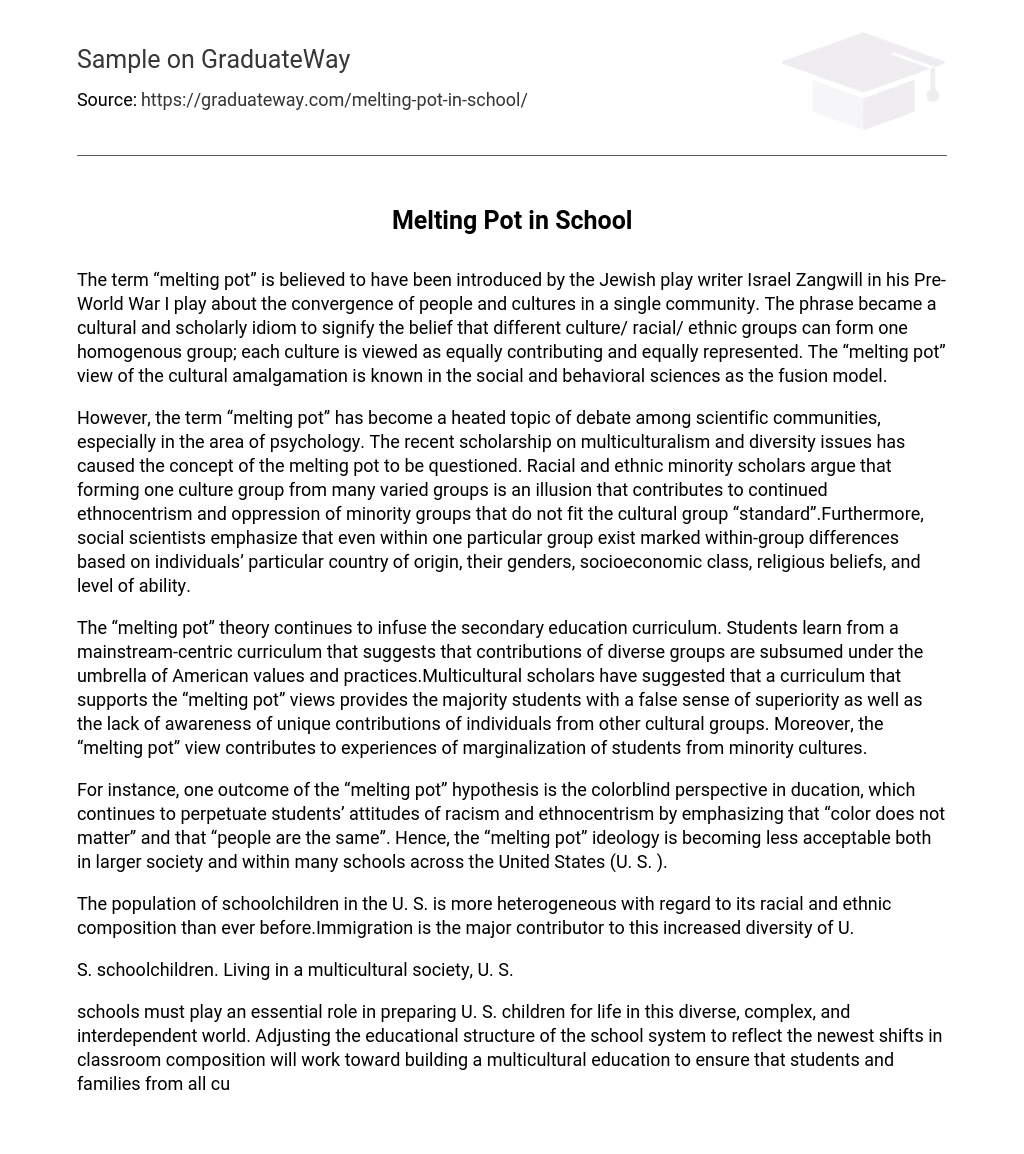The idea of the “melting pot” was first introduced by Israel Zangwill, a Jewish playwright, in a play before World War I. In the play, different individuals and cultures coexisted harmoniously within a community. This phrase now represents the belief that diverse racial, ethnic, and cultural groups can merge together to create a unified society. According to this viewpoint, every culture is equally valued and represented. In social and behavioral sciences, this concept of cultural assimilation is known as the fusion model.
Scientific communities, particularly in psychology, are engaged in an ongoing discussion regarding the term “melting pot”. The notion of multiculturalism and diversity has been recently examined, challenging the concept of a melting pot. Scholars from racial and ethnic minority backgrounds contend that merging diverse groups into a single culture perpetuates ethnocentrism and suppresses non-conforming minority groups. Additionally, social scientists emphasize that significant distinctions exist within specific groups due to factors such as individuals’ country of origin, gender, socioeconomic status, religious beliefs, and abilities.
The secondary education curriculum still embraces the idea of the “melting pot.” This curriculum teaches students that diverse groups’ contributions are incorporated within American values and practices. However, scholars who promote multiculturalism argue that this curriculum gives majority students a misguided sense of superiority and makes them unaware of the unique contributions made by individuals from different cultural groups. Additionally, the “melting pot” perspective leads to marginalized experiences for students from minority cultures.
The idea of the “melting pot” is commonly associated with the colorblind perspective in education. This perspective perpetuates racist and ethnocentric beliefs among students by emphasizing that all people are equal and that color does not matter. Consequently, both American society and numerous schools are witnessing a decrease in acceptance of this ideology.
Immigration is primarily attributed to the increasing diversity of schoolchildren in the U.S.
In the United States, schoolchildren are able to immerse themselves in a multicultural society.
It is crucial for schools to ensure that students and families from diverse cultures possess the necessary skills to effectively collaborate in our interconnected world. This means that schools play a vital role in preparing U.S. children for their future. By adapting the educational structure of the school system to align with changing classroom demographics, multicultural education can be promoted.
Children can gain an understanding and respect for diverse cultures in the United States and globally by embracing a multicultural education that rejects assimilation. This includes developing awareness of their own cultural heritage, fostering empathy towards different cultures, gaining insight into various perspectives, and preparing themselves for success in a society that is becoming increasingly diverse.
School psychology practices centered on multiculturalism should give utmost importance to the cultural heritage of children and recognize the distinct contributions that each culture brings to their perspective and overall well-being. In schools, counseling initiatives should involve all students and foster collaboration with minority teachers and staff, regardless of whether they take place during regular school hours or after-school. By doing so, the school’s culture and services will become more responsive to the needs of everyone involved while also cultivating a deeper appreciation for the fundamental worth of human diversity.





